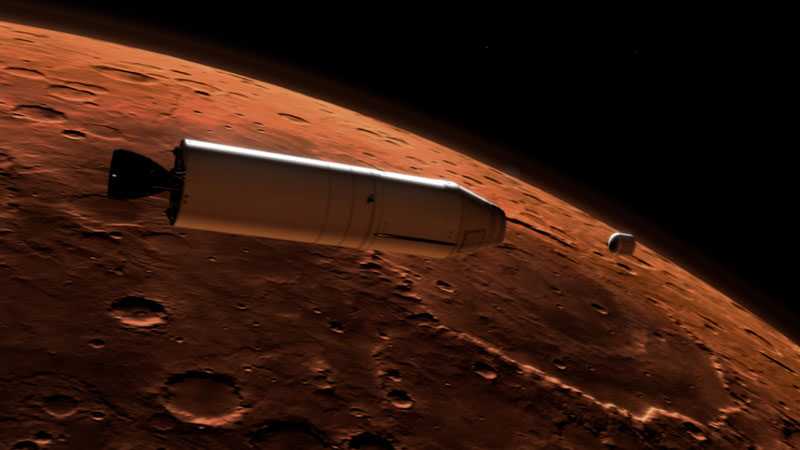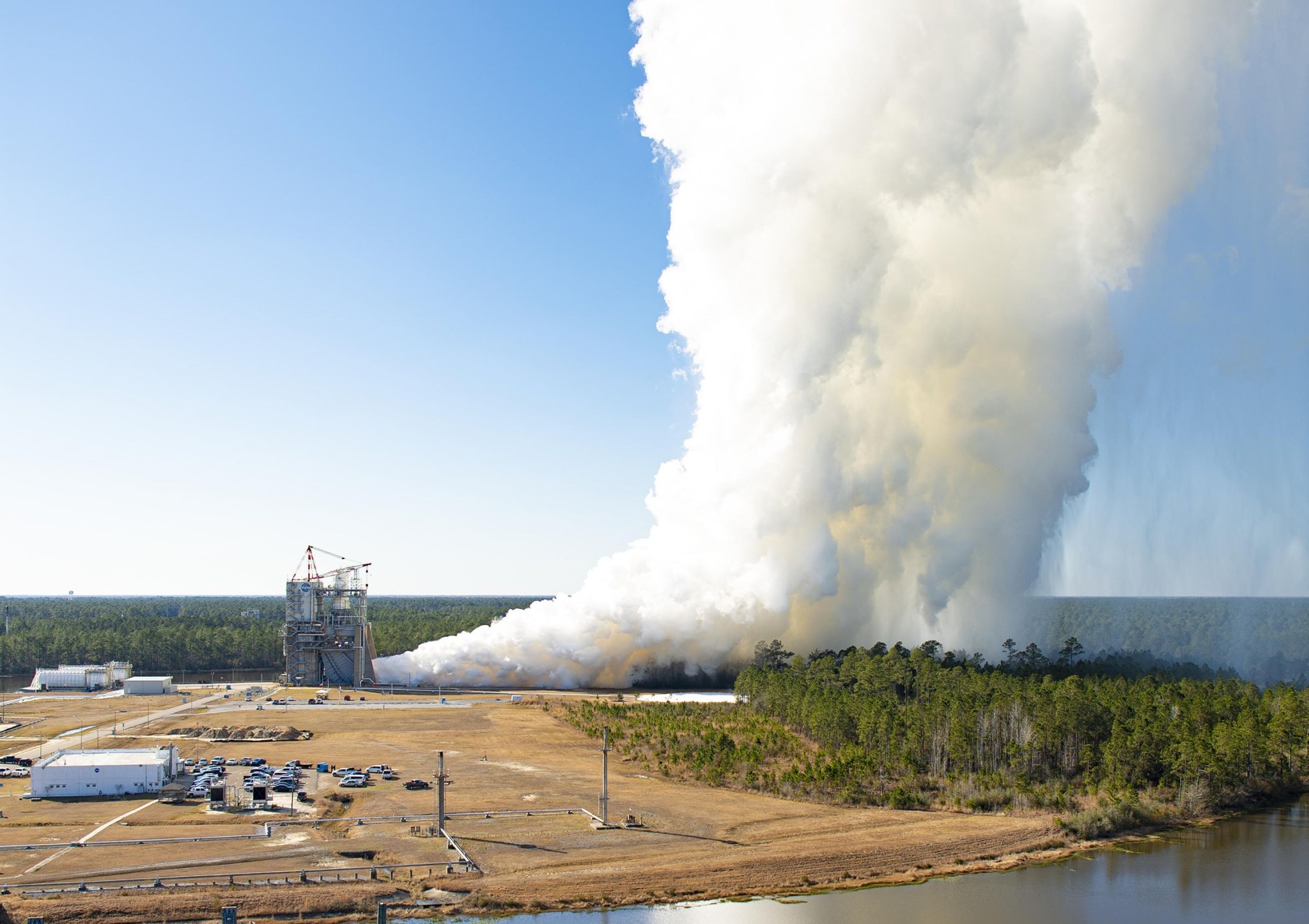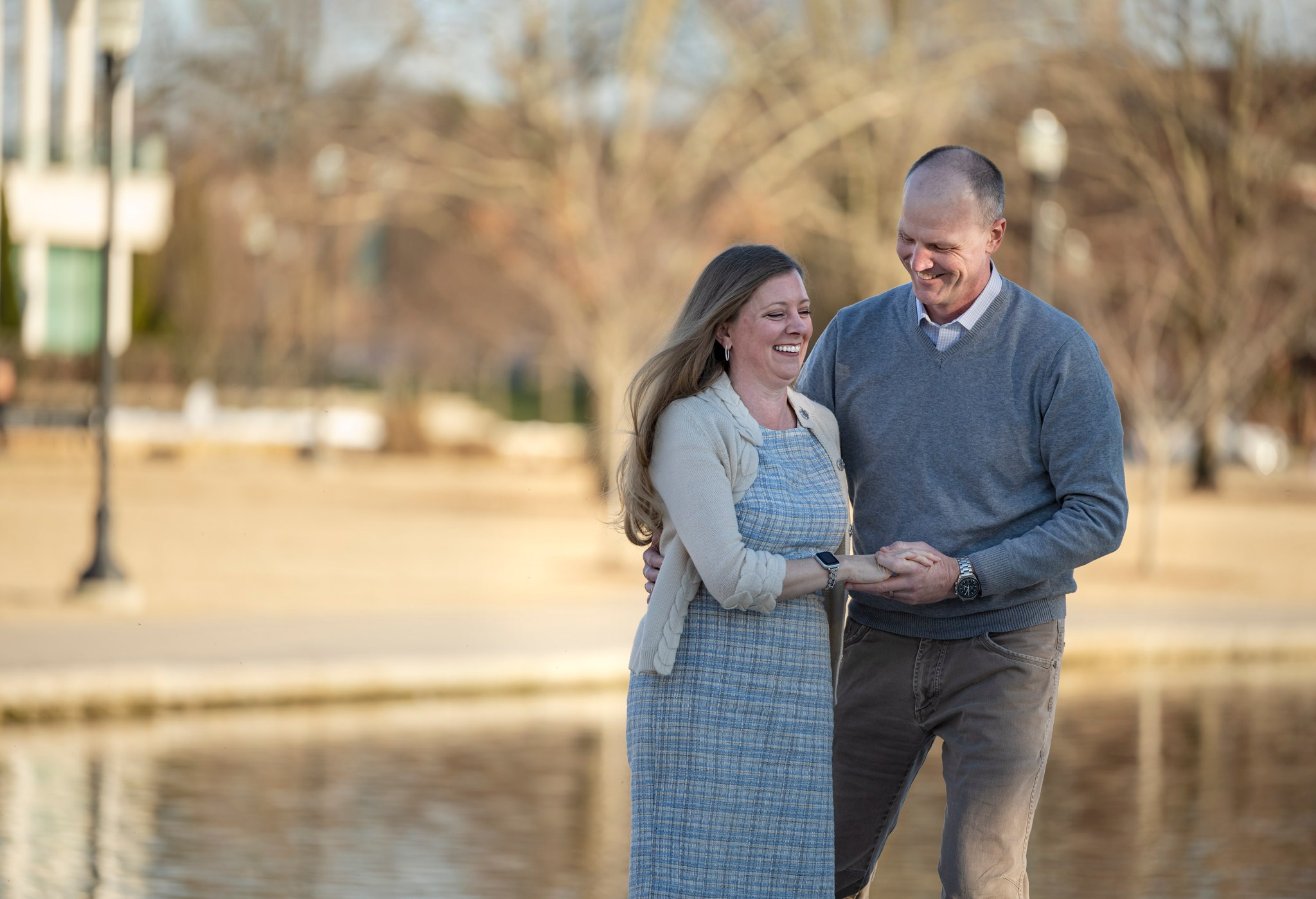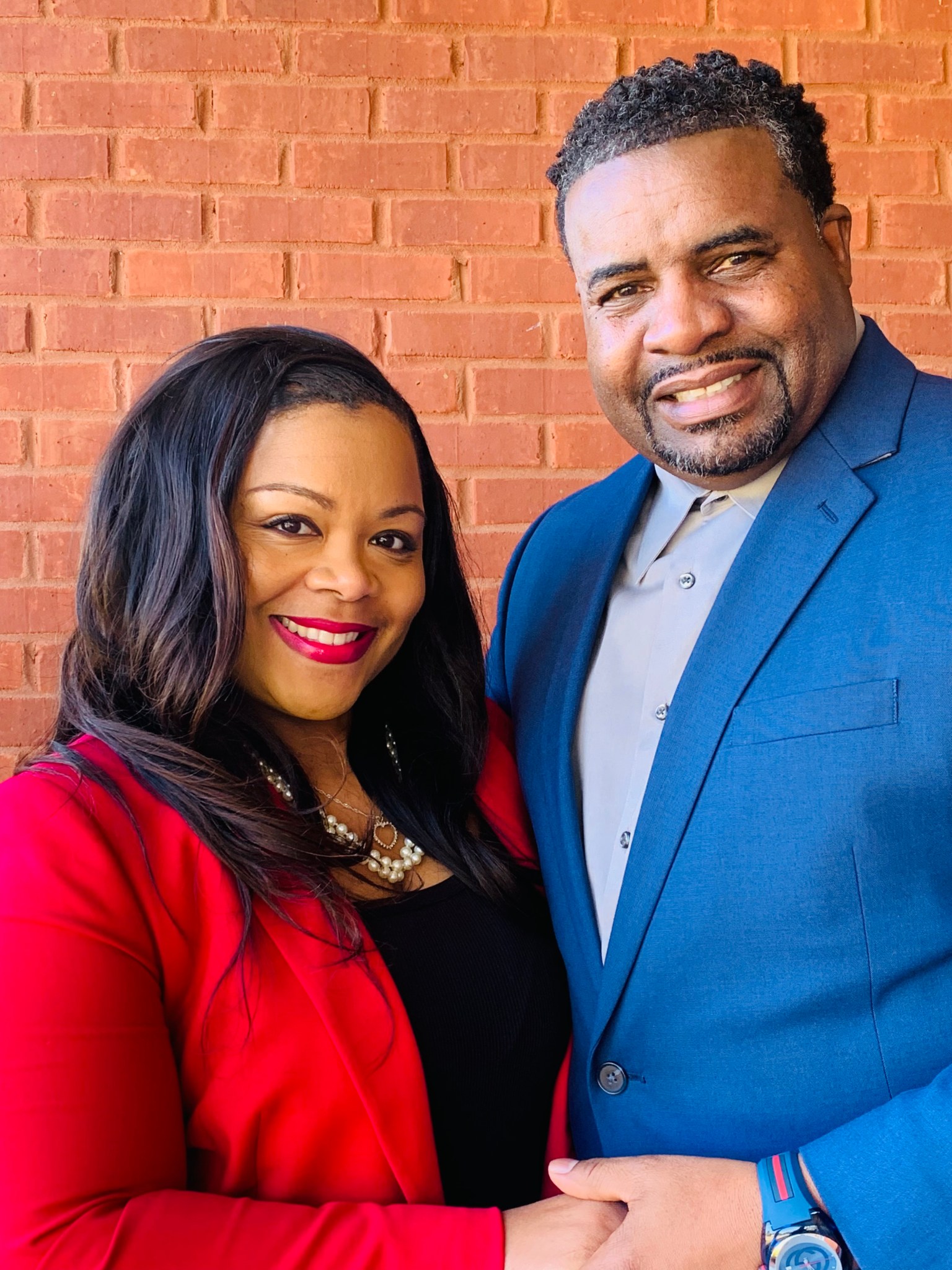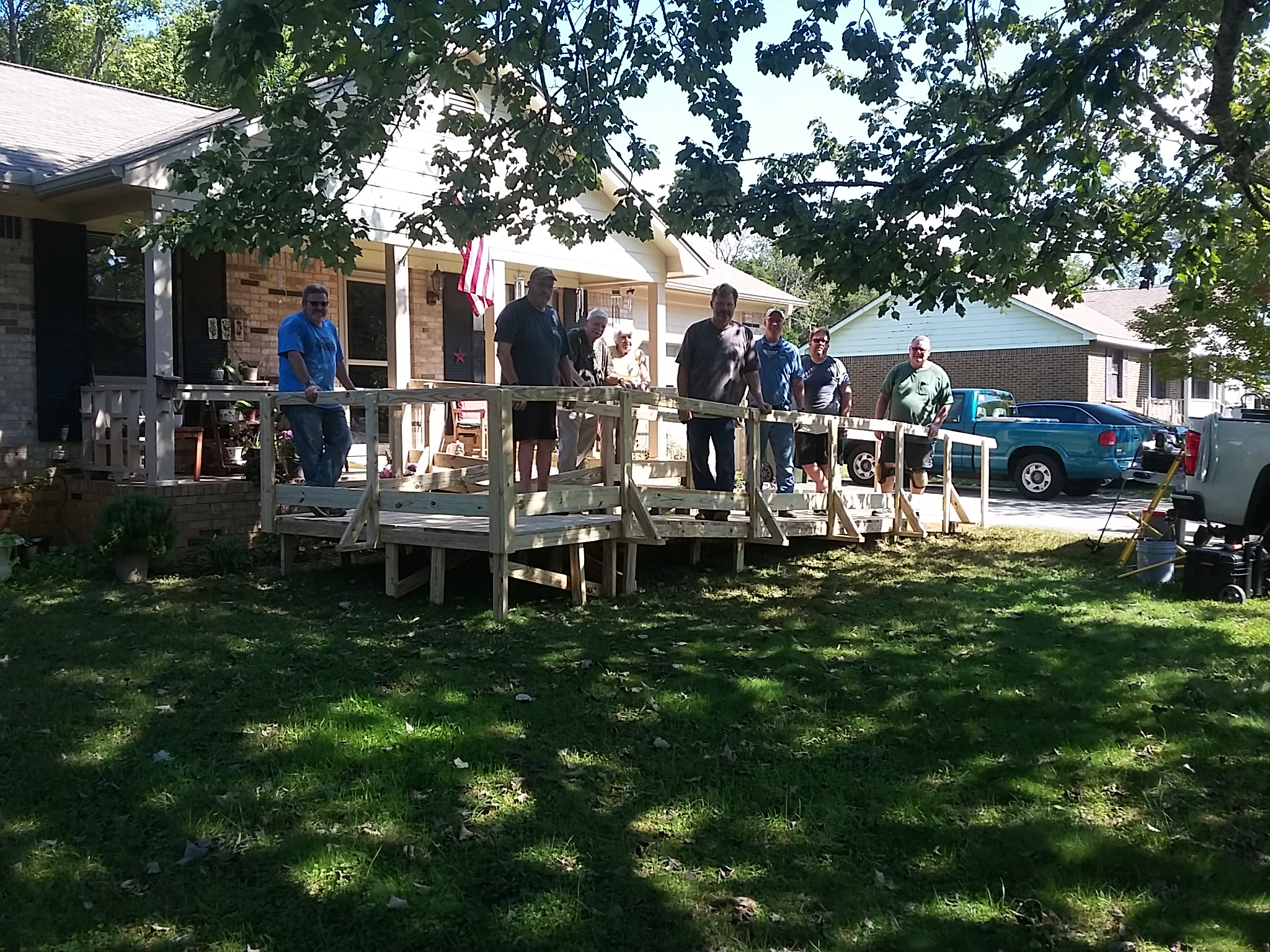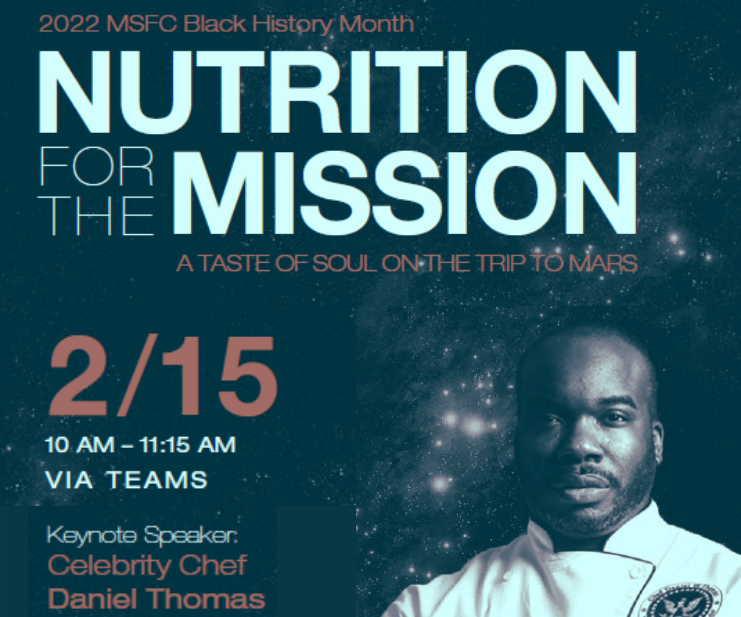NASA Selects Developer for Rocket to Retrieve First Samples from Mars
NASA has awarded a contract to Lockheed Martin Space of Littleton, Colorado, to build the Mars Ascent Vehicle (MAV), a small, lightweight rocket to launch rock, sediment, and atmospheric samples from the surface of the Red Planet. The award brings NASA a step closer to the first robotic round trip to bring samples safely to Earth through the Mars Sample Return Program.
“This groundbreaking endeavor is destined to inspire the world when the first robotic round-trip mission retrieves a sample from another planet – a significant step that will ultimately help send the first astronauts to Mars,” NASA Administrator Bill Nelson said. “America’s investment in our Mars Sample Return Program will fulfill a top priority planetary science goal and demonstrate our commitment to global partnerships, ensuring NASA remains a leader in exploration and discovery.”
Set to become the first rocket fired off another planet, the MAV is a crucial part of a campaign to retrieve samples collected by NASA’s Perseverance rover and deliver them to Earth for advanced study. NASA’s Sample Retrieval Lander, another important part of the campaign, would carry the MAV to Mars’ surface, landing near or in Jezero Crater to gather the samples cached by Perseverance. The samples would be returned to the lander, which would serve as the launch platform for the MAV. With the sample container secured, the MAV would then launch.
Once it reaches Mars orbit, the container would be captured by a European Space Agency Earth Return Orbiter spacecraft outfitted with NASA’s Capture, Containment, and Return System payload. The spacecraft would bring the samples to Earth safely and securely in the early- to mid-2030s.
“Committing to the Mars Ascent Vehicle represents an early and concrete step to hammer out the details of this ambitious project not just to land on Mars, but to take off from it,” said Thomas Zurbuchen, associate administrator for science at NASA Headquarters. “We are nearing the end of the conceptual phase for this Mars Sample Return mission, and the pieces are coming together to bring home the first samples from another planet. Once on Earth, they can be studied by state-of-the-art tools too complex to transport into space.”
Returning a sample is complicated, and the MAV faces some complex development challenges. It must be robust enough to withstand the harsh Mars environment and adaptable enough to work with multiple spacecraft. It also must be small enough to fit inside the Sample Retrieval Lander. The Sample Retrieval Lander is planned for launch no earlier than 2026 from NASA’s Kennedy Space Center.
Lockheed Martin Space will provide multiple MAV test units and a flight unit. Work under the contract includes designing, developing, testing, and evaluating the integrated MAV system, and designing and developing of the rocket’s ground support equipment.
The cost-plus-fixed-fee Mars Ascent Vehicle Integrated System contract has a potential value of $194 million. The performance period begins no later than Feb. 25 and will extend six years.
NASA’s Mars Sample Return Campaign promises to revolutionize understanding of Mars by bringing scientifically selected samples for study using the most sophisticated instruments around the world. The campaign would fulfill a solar system exploration goal, a high priority since the 1970s and in the last two National Academy of Sciences Planetary Decadal Surveys.
The samples collected by Perseverance during its exploration of an ancient river delta are thought to present the best opportunity to reveal the early evolution of Mars, including the potential for life.
NASA’s Marshall Space Flight Center is responsible for overall management of the MAV as the agency continues to build on a history of successful industry partnerships for planetary missions. While leveraging the experience of its commercial partners, Marshall will produce the flight software and guidance, navigation, and control subsystems in-house based on similar, recent work. This provides the project with the most beneficial blend of experience and capability. Marshall’s Angie Jackman is the MAV project manager.
NASA Conducts Second RS-25 Engine Test of Year at Stennis
NASA conducted its second RS-25 engine hot fire test of the new year Feb. 8 on the Fred Haise Test Stand at Stennis Space Center. The test was the third hot fire in the latest test series that began in mid-December.
NASA is testing RS-25 engines to help power the agency’s Space Launch System (SLS) rocket on future deep space missions. Four RS-25 engines will generate a combined 2 million pounds of thrust to power SLS’s ascent. Each test in the current series is providing valuable operational data to NASA’s lead contractor, Aerojet Rocketdyne, on a variety of new components manufactured with state-of-the-art fabrication techniques as the company begins production of new RS-25 engines. The RS-25 engines for the first four SLS flights are upgraded space shuttle main engines and have completed certification testing. NASA will use the data from the current test series to enhance production of new RS-25 engines and components for use on subsequent SLS missions. The testing is part of NASA’s and Aerojet Rocketdyne’s effort to use advanced manufacturing methods to significantly reduce the cost and time needed to build new engines.
For the Feb. 3 test, engineers fired the RS-25 developmental engine for a full duration of about 8 1/2 minutes (500 seconds), the same amount of time the engines must operate to help send SLS to space. Operators also fired the engine up to 111% of its original power level, the same level needed during SLS launch.
SLS will be the world’s most powerful rocket and the only one capable of sending the agency’s Orion spacecraft, astronauts, and supplies to the Moon in a single mission. Initial SLS missions will send Orion to the Moon as part of NASA’s Artemis program, including the Artemis I uncrewed test flight this year that will pave the way for future flights with astronauts to explore the lunar surface and prepare for missions to Mars. Artemis missions also will land the first woman and first person of color on the lunar surface. SLS and Orion, along with the commercial human landing system and the Gateway outpost in orbit around the Moon, are NASA’s backbone for deep space exploration.
RS-25 tests at Stennis are conducted by a combined team of NASA, Aerojet Rocketdyne, and Syncom Space Services operators. Syncom Space Services is the prime contractor for Stennis facilities and operations.
NASA Prepares to Join Two Major Parts for Artemis II Core Stage
Technicians are preparing to connect two major parts of the Space Launch System (SLS) rocket’s Artemis II core stage. On Jan. 30, technicians moved the largest part of the stage, the 130-foot liquid hydrogen tank, to the vertical assembly area at NASA’s Michoud Assembly Facility, where it will be prepared for joining with the 66-foot forward assembly.
The forward assembly comprised of the joined forward skirt, intertank, and liquid oxygen tank completed construction and was transported to the final assembly area inside the factory Jan. 10. Technicians will move the liquid hydrogen tank back to this final assembly where Boeing, the lead core stage contractor, will join the two structures. This will complete construction of most of the core stage that will launch the first crew on the Artemis II mission.
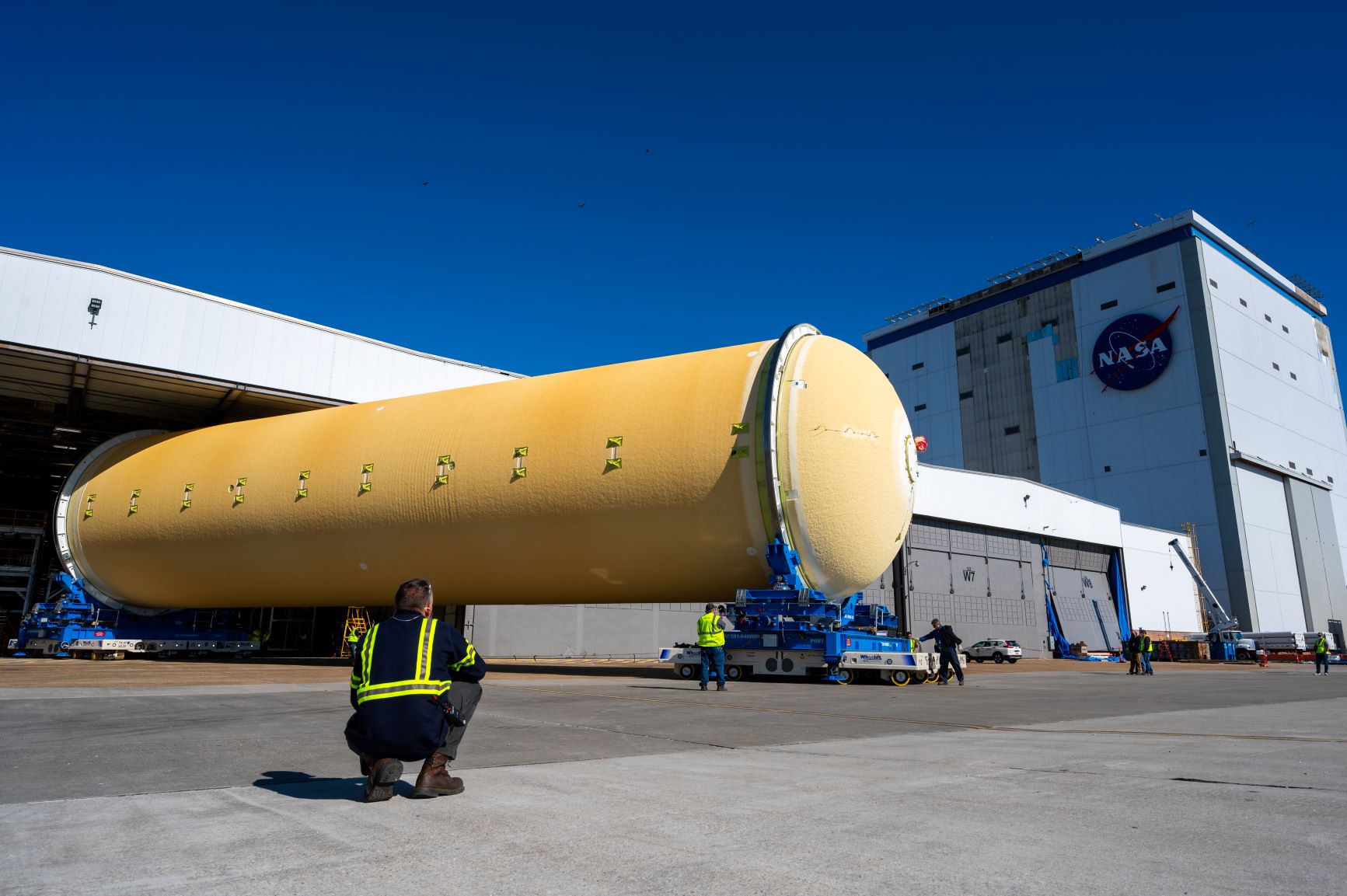
The forward assembly comprised of the joined forward skirt, intertank, and liquid oxygen tank completed construction and was transported to the final assembly area inside the factory on Jan. 10. Technicians will move the liquid hydrogen tank back to this final assembly where Boeing, the lead core stage contractor, will join the two structures. This will complete construction of most of the core stage that will launch the first crew on the Artemis II mission.
Only the engine section, the fifth piece of the stage, will need to be added to complete the Artemis II core stage. The engine section is one of the most complex parts of the stage. It includes the main propulsion system that connects to the four RS-25 engines that are built by Aerojet Rocketdyne and are assembled and stored at their facility at NASA’s Stennis Space Center near Bay St. Louis, Mississippi. The engines will be the last items installed on the stage. During launch, more than 700,000 gallons of propellant flows from the core stage tanks to the engines that produce more than 2 million pounds of thrust to help launch the SLS rocket.
The core stage serves as the backbone of the rocket, supporting the weight of the payload, upper stage, and Orion crew vehicle, as well as the thrust of its four RS-25 engines and two five-segment solid rocket boosters attached to the engine and intertank sections. The Artemis II mission will help NASA prepare for later Artemis missions that will enable the first woman and first person of color to land on the Moon. Credits: NASA/Jared Lyons
Only the engine section, the fifth piece of the stage, will need to be added to complete the core stage. The engine section is one of the most complex parts of the stage. It includes the main propulsion system that connects to the four RS-25 engines that are built by Aerojet Rocketdyne and are assembled and stored at their facility at NASA’s Stennis Space Center. The engines will be the last items installed on the stage. During launch, more than 700,000 gallons of propellant flows from the core stage tanks to the engines that produce more than 2 million pounds of thrust to help launch the SLS rocket.
The core stage serves as the backbone of the rocket, supporting the weight of the payload, upper stage, and Orion crew vehicle, as well as the thrust of its four RS-25 engines and two five-segment solid rocket boosters attached to the engine and intertank sections. The Artemis II mission will help NASA prepare for later Artemis missions that will enable the first woman and first person of color to land on the Moon.
Enough Space: Marshall Couples Balance Home, Work Relationships
By Wayne Smith
Combining love and a NASA career may not be rocket science, but it does require finding enough space to balance work and home life.
Necessary cargo for a journey toward a healthy relationship also includes patience, flexibility, and the ability to laugh.
Many couples at NASA’s Marshall Space Flight Center are on this mission together. Meet three of them: Dayna and Carl Ise, Denise and Kenneth Smithers, and Huu and Diep Trinh. The Ises and Smithers met at Marshall, while the Trinhs went to school together in Vietnam before being reunited at a refugee camp.
With Valentine’s Day in sight, the couples talked about how they’ve sustained an enduring relationship while also working together.
Dayna and Carl Ise: A patient path
Carl Ise had a path to follow for blending a marriage and two careers at Marshall. His parents – Rein and Jerry Ann Ise – worked together at Marshall and have been married 61 years. Today, Carl and Dayna live in the Huntsville house where he grew up, with Carl’s parents living nearby.
“It’s very nice to have them close,” Carl said. “In their relationship, my dad talks about having patience and understanding that whatever it is, it’s going to be OK.”
Patience is something Carl needed as he waited for Dayna to lead his engine orientation tour at Marshall. The two met in a new employee class shortly after joining NASA. But they didn’t see each other again for two years.
“I moved into the Engine Systems Branch when Dayna was in the Engine Analysis Branch,” Carl said. “New hires into the Propulsion Systems received orientation tours, and Dayna or Robert Polsgrove usually gave the tours. Robert kept offering to take me and I kept turning him down waiting for Dayna to become available. She took me on the tour, and I asked her to grab lunch.”
The rest is history. The Ises have been married for 17 years and have two children – Sven, 16, and Charles, 14.
Carl is operations integration manager for the Payload and Mission Operations Division in the Human Exploration Development & Operations Office. Dayna is manager of Space Nuclear Propulsion, which encompasses nuclear thermal and nuclear electric propulsion development projects.
The Ises are excited to be working with recent and upcoming NASA missions, including the Space Launch System.
“Working together does present some challenges, but we go to each other quite a bit for advice,” said Dayna, who is from Joliet, Illinois. “I talk things through with Carl and he gives great advice. It’s like having a full-time career coach.”
Carl said they often act as a sounding board for each other.
“Of course, work spills into home life, but I think for the most part in a positive way,” Carl said. “We work through challenges with each other. Dayna has made me a better engineer.”
Denise and Kenneth Smithers: Maintaining balance
Laughing and keeping a positive attitude are crucial for maintaining a healthy relationship while working together, said Denise Smithers. Working from home during the COVID-19 pandemic created additional challenges and she said respecting each other’s space at home is important.
“Being at home for almost two years with dueling Microsoft Teams meetings, virtual sixth-grade assisting at one point, and all other household duties can be a lot,” Denise said. “Creating a schedule but also being flexible on days when one of us has a day full of meetings and can’t do school drop-off or pickup is imperative for maintaining balance.”
And Kenneth’s advice for maintaining that balance? “You learn to do what you are told,” he said.
The Smithers met in the cafeteria of Building 4203. Married for 21 years, they have a son, William, 12.
Denise is from Athens, Alabama, and started working at Marshall at 18 as a summer intern. With Marshall for nearly 30 years, she is office chief for the Budget Integration and Analysis Team in the Office of the Chief Financial Officer. She said building her career and family at Marshall are more than she could have imagined.
“The people at Marshall are the best, and I’ve created so many amazing relationships during my career,” she said. “I am very optimistic about what lies ahead for NASA with the upcoming Artemis missions, landing the first woman and person of color on the Moon, and the diversity and inclusion initiatives.”
Kenneth, who is from Decatur, Alabama, is an IT project manager supporting NASA’s Michoud Assembly Facility on the Consolidated Program Support Services contract. He said keeping flexible schedules is imperative while working together, particularly while teleworking. The Smithers agree maintaining boundaries at home is important, just as if working in the office.
“I am a people person, and my role allows me to have consistent interaction with my team and a myriad of customers seeking IT solutions,” Kenneth said. “I am fortunate to be engaged with the Michoud team as it provides vital support to NASA exploration and discovery missions. There is a lot be excited about.”
Diep and Huu Trinh: Reunion and rockets
The Trinhs’ love story began in Baclieu, a province in southern Vietnam, where they were classmates in middle and high school. Diep fled Vietnam when she was in the middle of her 11th grade year. Huu finished the 11th grade before leaving Vietnam.
Huu said they did not expect to be reunited as there were several refugee camps in Southeast Asia.
“Diep and I arrived at different camps on separate islands,” Huu said. “We saw each other again when the two camps were later combined. We were very happy for the reunion since both of us came from the same school and had similar goals of finding a new land to advance our education.”
Huu is an engine lead on the Commercial Crew Program SpaceX Dragon and Boeing Starliner. Diep is lead system engineer for In-Space Manufacturing.
The Trinhs, married for 35 years with three grown daughters, said they have learned a lot about each other’s work as they help NASA return to the Moon and one day have a human presence on Mars.
“Growing up in a very remote village in Vietnam, I remember seeing the Apollo Moon landing,” Diep said. “I couldn’t have imagined we’d both be working together someday at Marshall.”
Smith, a Media Fusion employee, supports Marshall’s Office of Strategic Analysis & Communications.
Marshall’s 2021 Combined Federal Campaign Fundraiser Soars
By Rick Smith
As NASA continues to send new science missions to space and prepares to launch the most powerful rocket ever built to return astronauts to the Moon, it’s clear that a global pandemic can’t keep a good team down.
Now NASA’s Marshall Space Flight Center has reinforced that credo in an even more fundamental way – concluding the 2021 Combined Federal Campaign goodwill drive with total pledged funds that exceeded even pre-pandemic giving.
Lindsey Ingram, Marshall’s Combined Federal Campaign chair for the 2021 effort, reported that Marshall raised $323,229.70 during the fundraiser, which supports charitable and nonprofit organizations at the local, regional, and national levels. That amount not only left 2020 figures in the dust, but even surpassed the $319,921.50 raised in 2019.
For Marshall Director Jody Singer, that outcome was no surprise.
“This team adapts marvelously to any challenge, and always leads with its collective heart,” Singer said. “I am so proud to work with people whose talents lift us to the stars – and whose spirit of generosity and kinship uplifts everyone around them, every day.”
Marshall volunteers also contributed nearly twice the number of hours of service in 2021 as they did prior to the start of the pandemic. Team members pledged 156 volunteer hours to various charitable organizations in 2019. In 2021, they pledged a total of 298 hours.
“That kind of selfless service speaks volumes, especially in the current environment,” Ingram said.
She credits her campaign coordinators and key workers across the center for keeping the fundraising energy high throughout the giving season – using email and other virtual means to engage team members who were unable to gather in person due to pandemic protocols.
“Communication is always key,” Ingram said.
A robust federal government clearinghouse site with inspirational content and access to donation forms and guidelines also helped significantly, she said.
Collectively, federal employees, retirees, and contractors across the Greater Tennessee Valley raised more than $1.5 million during the latest campaign and committed 820 volunteer hours to support local, national, and international charities.
Since its inception 60 years ago, the Combined Federal Campaign has raised more than $8.5 billion to support homeless shelters, fed families in need, provided assistance for disabled persons, rescued abandoned or neglected animals, sought cures for diseases, and aided military veterans.
Marshall team members interested in joining the Combined Federal Campaign coordinating committee for the 2022 fundraiser should contact Ingram or Marshall program specialist Gabrall Yeldell.
Smith, a Manufacturing Technical Solutions employee, supports Marshall’s Office of Strategic Analysis & Communications.
Chef Daniel Thomas to Speak at Black History Month Event
As part of Black History Month, NASA’s Marshall Space Flight Center will host a Feb. 15 virtual event: Nutrition for the Mission – A Taste of Soul on the Trip to Mars. The keynote speaker will be chef Daniel Thomas, a celebrity chef, author, and CEO, who will share his story and feature a live cooking demonstration.
Thomas is a graduate of the Culinary Institute of America in Hyde Park, New York. His training also includes business management, restaurant ownership, biology, anatomy, physiology, and psychology. A native of Washington, D.C., Thomas is a private chef, senior advisor, and consultant.
NASA’s theme this year for Black History Month is “Black Health and Wellness.” Marshall’s Office of Diversity and Equal Opportunity sponsors the Special Emphasis Programs for the center. The programs assist the center in synergizing a more effective use of resources that heighten creativity and innovation in seeking solutions to critical problems from diverse perspectives, as well as enhancing opportunities and inclusion for all members of the center’s workforce. The program will be available for viewing via Microsoft Teams on Feb. 15 from 10-11:15 a.m. To watch, visit here.


























